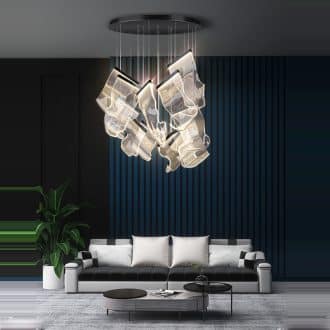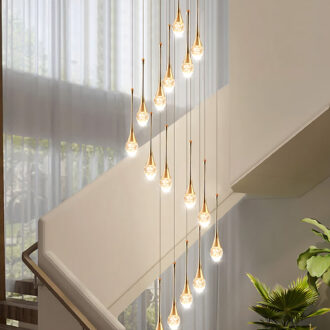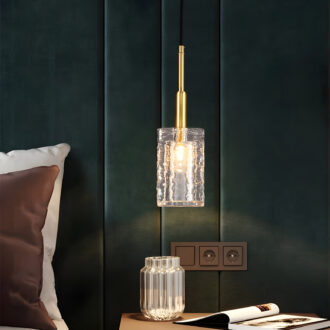How to Spot Superior Quality in Light Fixtures: A Detailed Guide April 21, 2024 – Posted in: Tutorials, Hospitality Lighting
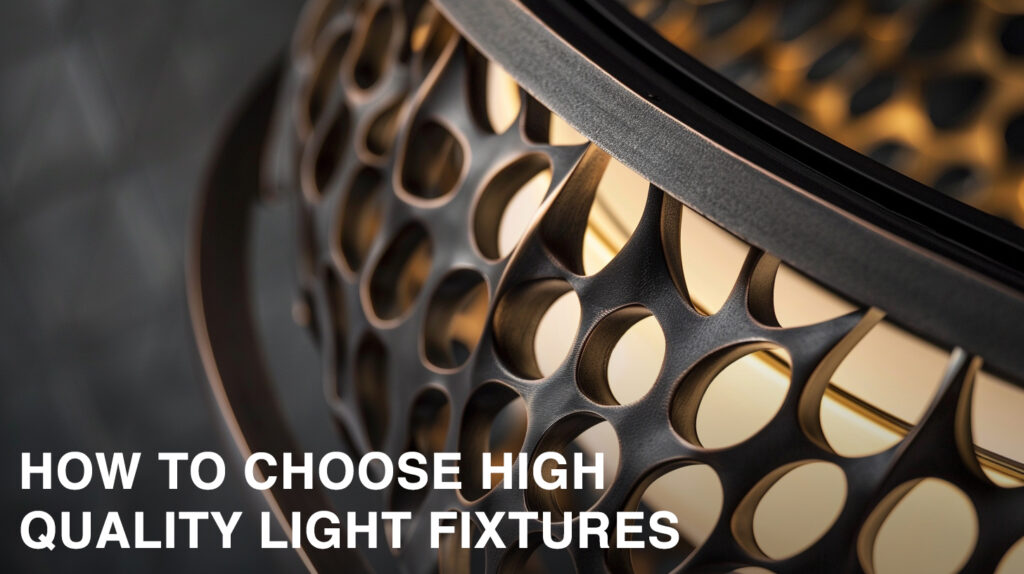
Table of Contents
Selecting the perfect light fixtures for your home can sometimes seem like a daunting task.
After years of manufacturing experience, we’re excited to share our discoveries with you. Our guide simplifies the process of choosing exceptional lighting options, from reputable driver brands to durable metal types.
Key Takeaways
- LED drivers are important for light fixtures because they help the lights work better and last longer. Look for brands like Mean Well, Philips, and Tridonic for quality.
- Choosing a fixture with the right LEDs, such as those from San’an, Epistar, Cree, or Lumileds, makes a big difference in how bright and long-lasting your lights will be.
- Different metals used in light fixtures affect their cost and durability. Brass is more expensive but lasts longer without rusting, while steel provides a modern look at a mid-range price.
- The type of finish on a light fixture can protect it against rust and wear. Techniques like anodizing add durability to materials such as aluminum.
- Safety certifications and warranties are important when choosing light fixtures. Brands that pass tests from organizations like CSA or UL Solutions assure high standards of safety.
Driver Brands and Quality
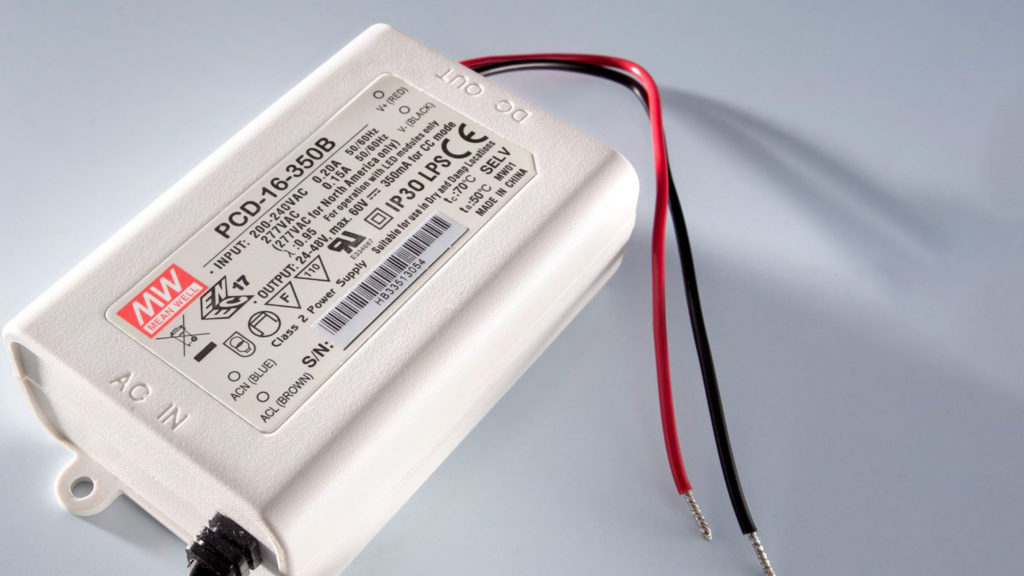
What LED drivers are and why they’re crucial for light fixture performance
LED drivers are like the heart of LED light fixtures, giving them the power they need to shine bright. These special devices change incoming electricity so it works just right for LED lights.
Whether a fixture needs a steady flow of current or a set level of voltage, LED drivers make sure LEDs have what they need to perform well.
Without reliable LED drivers, your chandeliers and luxury lighting won’t work as expected.
Choosing quality LED drivers is key for getting lighting that lasts longer and works better. We always look for the best in the business, ensuring our lights not only work but last in excess of 7 years.
Challenges in assessing the quality of custom LED drivers

Finding the best quality in custom LED power units is tricky. Many factors play their parts, such as how well these devices handle electrical currents and their design for LED circuits.
We must pay close attention to these aspects to ensure our lighting fixtures shine bright and last long. High-quality LEDs take forever to fail completely, so choosing the right drivers is key as it will usually fail first.
Many brands claim their LED control gear is top-notch, but without testing them under real conditions, it’s hard to tell. Look for signs of good performance like consistent brightness and efficient energy use.
Usually really cheap drivers will save money on insulation and feel lightweight and hollow compared to their higher quality counterparts. These will typically be found on discount sites such as Ebay or Aliexpress. Cheap power supplies will also be missing the UL recognized mark seen below.

Overview of reputable driver brands and indicators of good quality
We all want our lights to work well and last long. To do that, we need the best parts inside them. Here’s a list of top driver makers and what makes them shine.
- Look for names like Mean Well, Philips, and Tridonic. They’re well-known in the lighting world for a reason.
- Good drivers manage electricity flow to keep lights bright without using too much power.
- They also protect lights from sudden power spikes that can cause damage.
- High – grade materials mean these drivers can handle hot and cold weather without breaking down.
- These brands offer great warranties that promise their drivers will last a long time.
- You can find options with safety badges from groups like Underwriters Laboratories (UL). This means they’ve passed the toughest of testing requirements.
- Their products make sure your lights won’t quit after just a few rainstorms or on really hot days.
LED Chip Quality

Introduction to the key LED brands and their quality standards
Choosing the right LED brand for your lighting needs makes a big difference. We’re here to help you understand why top brands like Cree, and Lumiled are the go-to choices for quality light fixtures.
- San’an Optoelectronics is a Chinese brand known for cheap LED chips. They’re the typical LED’s you’ll find in cheap fixtures. I would personally avoid these, and our company avoids these too.
- Epistar specializes in creating LED chips that are not only powerful but also reliable. They offer a great mix of value and performance, making them a smart choice for both homes and businesses.
- Cree, with over thirty years of experience, is a pioneer in LED innovation. Their LEDs are backed by top-notch design and support, setting high standards globally for quality and durability.
- Lumileds operates worldwide, bringing advanced lighting solutions to more than 30 countries. With a team of over 7000 members, they’re committed to pushing the boundaries of what LEDs can do. These LED’s are often found in high bay lighting and other commercial applications.
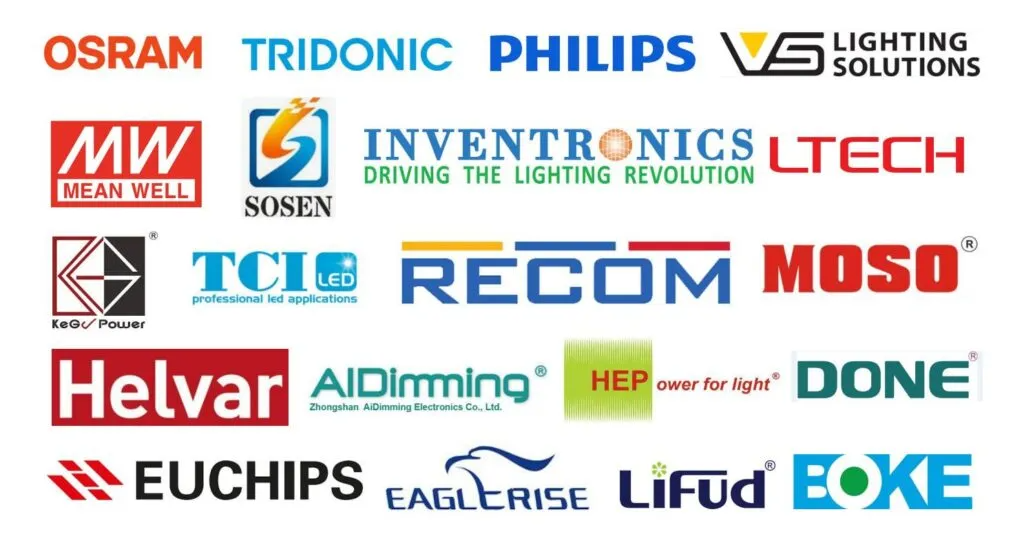
Each brand brings something unique to the table:
- San’an’s chips are generally cheap and low performance Chinese chips.
- Epistar finds the perfect balance between cost and quality.
- Cree, Bridgelux and Nichia ensures their LEDs are among the best.
- Lumileds focuses on innovation to lead the market forward.
Although it is hard to verify what brand LED is used in the fixture (unless you have a microscope and lots of free time), a lot of times manufacturers will tell you the brand they’re using if you ask.
Impact of electrical stress such as over-volting and under-voltage on LEDs
Electrical stress, like over-volting and under-voltage, can harm LEDs in ways we’ve seen firsthand. Over-volting pushes too much power into an LED. This extra power makes the light work harder than it should, which can lead to overheating and a shorter life.
We’ve observed how quickly brightness can drop and color quality can change when an LED is over-volted.
On the flip side, under-voltage means not enough power gets to the LED. While this doesn’t cause immediate damage like over-volting does, it also leads to problems. The light might flicker or not reach its full brightness potential.
Making the right choice in LEDs can avoid electrical stress and ensure their long-lasting performance.
Metal Types and their Effects on Durability and Pricing
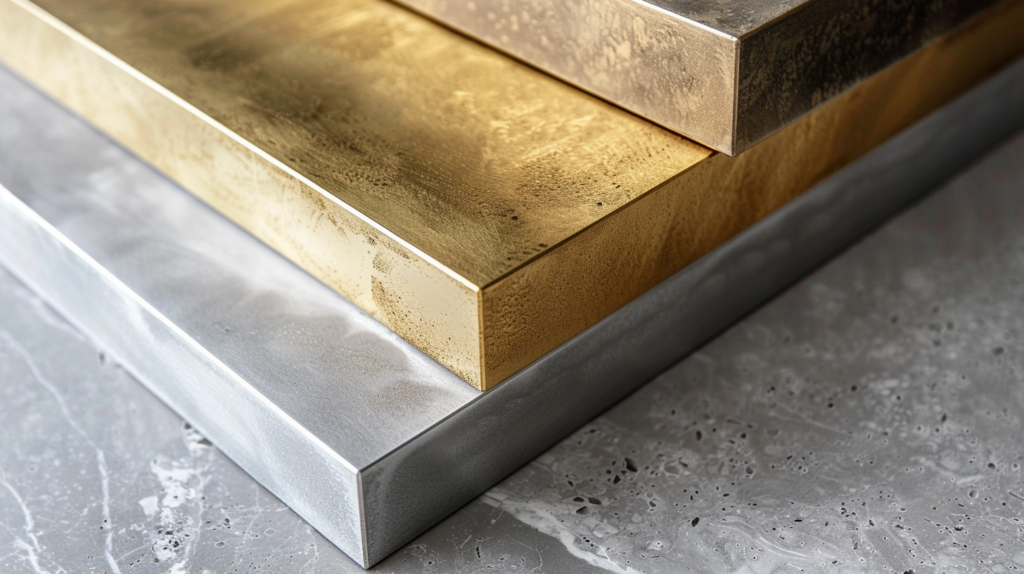
Comparison of different metals used in fixtures
Choosing the right metal for your light fixtures is key to getting both the look and longevity you want. We know there’s a lot to consider, from style to cost. That’s why we’ve put together a handy guide to help you compare various types of metals. Each has its own benefits and price points.
| Metal Type | Pros | Cons | Cost Implication |
|---|---|---|---|
| Aluminum | Lightweight, good heat dissipation | Prone to corrosion without proper finish | Low to moderate |
| Brass | Corrosion-resistant, aesthetically pleasing | Heavy, can tarnish over time | High |
| Stainless Steel | Durable, corrosion-resistant | Can be heavy and costly | Moderate to high |
| Copper | Excellent conductivity, natural patina | Expensive, can corrode without treatment | High |
| Iron | Very strong, robust | Prone to rust, heavy | Low to moderate |
| Chrome | Sleek, modern appearance | Requires regular cleaning to prevent tarnishing | Moderate to high |
| Bronze | Strong, classic appearance | Heavy, can patina or corrode | High |
Stainless steels also have various properties depending on their types, for example 310 stainless steel is more corrosion resistant that regular 304 stainless steel. While 316 stainless steel is some of the most resistant and designed for marine environments. If you live oceanside, I recommend using higher grade materials so your fixtures don’t start to rust so quickly.
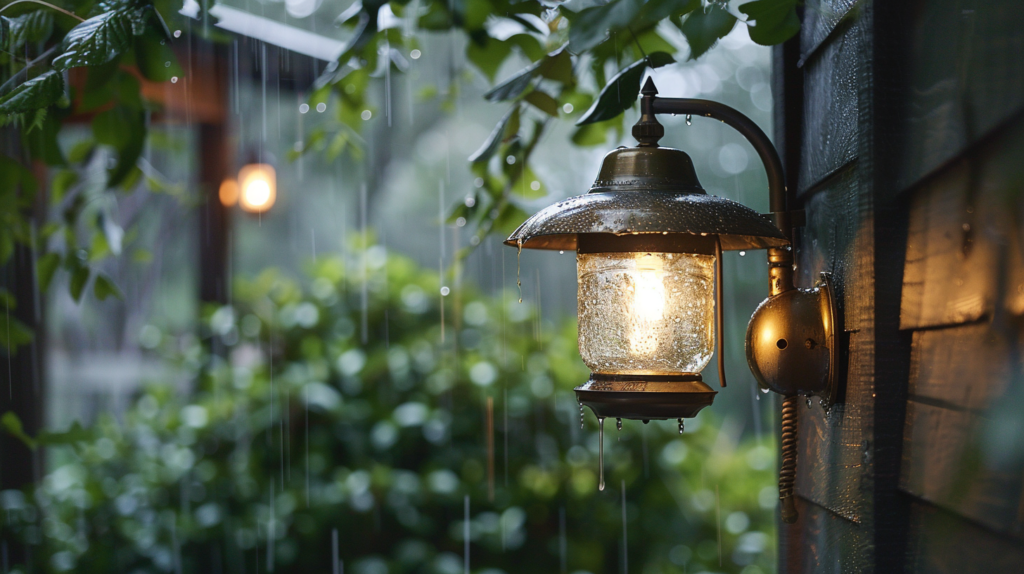
Remember, brass or bronze is top-notch for outdoor lighting. Though it might pinch your wallet at first, its durability means fewer replacements down the line. On the other hand, steel offers a sleek, modern vibe at a friendlier price, ideal for indoor settings. Iron, with its sturdy feel and traditional look, could be your go-to for a rustic charm. Just keep in mind, it needs a bit of care to prevent rust.
Overview of non-metal materials (Acrylic, Stone, Glass)
Acrylic
We’ve seen acrylic in many light fixtures because it’s tough and lasts long. But cheap acrylic can turn yellow if it gets too much sunlight or over time, similar to an old computer case yellowing after a few years. By using higher quality acrylic, you can ensure this doesn’t happen. You’ll mostly find this issue with cheap quality lighting.
Stone – Faux vs Natural
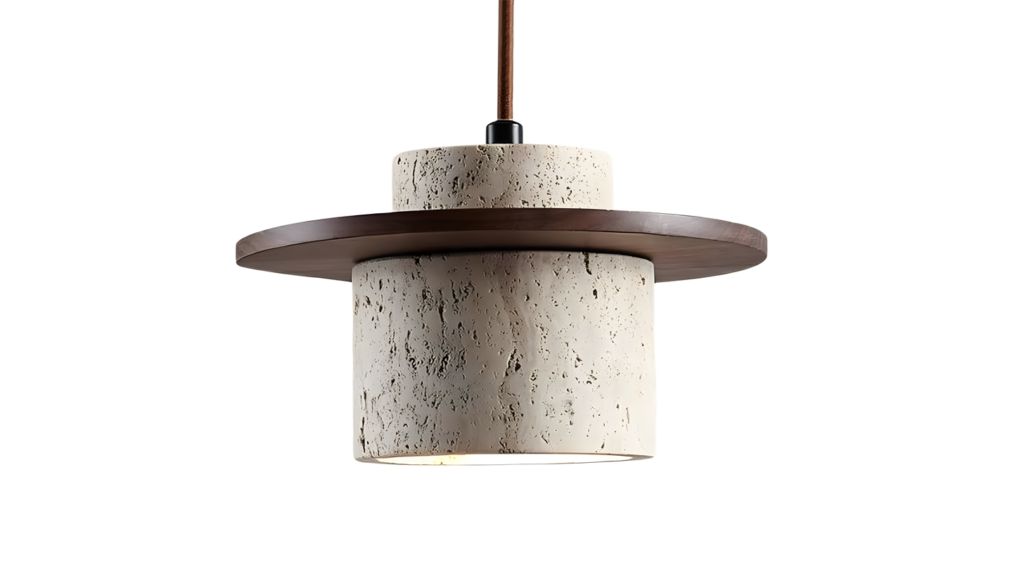
For stone, we have two types: faux and natural. Faux stone costs less and is easier to set up than real stone. Even though it’s not as strong as natural stone, its looks can fool anyone from a distance.
On the flip side, real stone might be pricier and heavier but has benefits like keeping buildings cooler by reflecting sunlight away. A quick way to check if the stone is natural is by placing your palm on it to see if it feels warm to the touch in a room temperature setting. If it’s warm, it’s most likely faux material.
Glass & Crystal
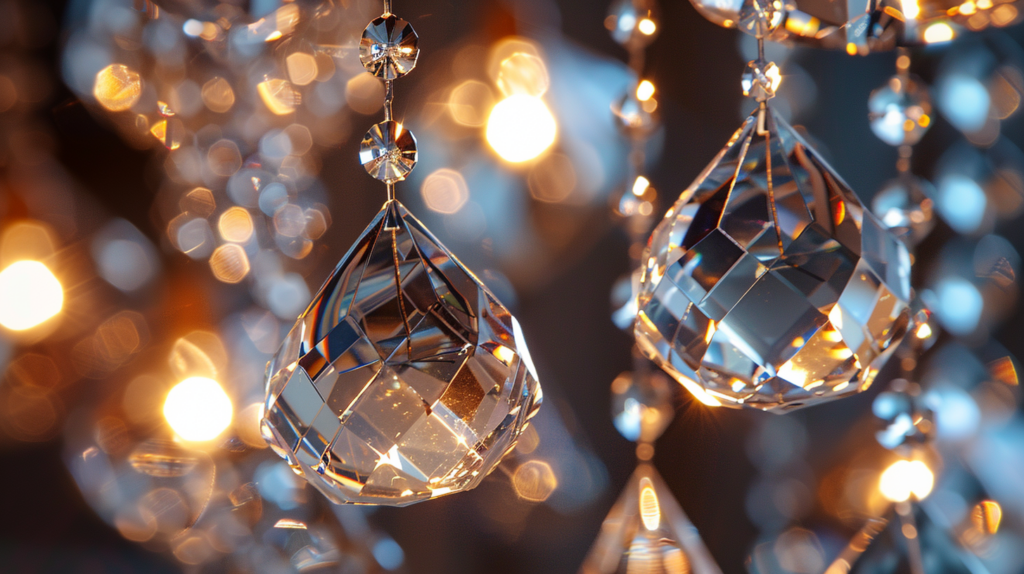
Glass comes in many varieties and the price is largely driven by the added process to achieve the appearance. Here is a basic reference for some of the more common types of glass used in fixtures:
| Glass Type | Pros | Cons | Cost Implication |
|---|---|---|---|
| Clear Glass | Maximizes light output; versatile | Shows dust and fingerprints easily | Generally inexpensive |
| Frosted Glass | Diffuses light for a softer glow; hides imperfections | Reduces brightness | Moderately priced |
| Seeded Glass | Adds visual interest with bubbles; unique aesthetic | Can vary in appearance; less clear | Slightly higher cost |
| Colored Glass | Adds a decorative color; can control light ambiance | Color may fade; specific to decor | Varies with color and processing |
| Stained Glass | Intricate designs; vibrant colors | Can be fragile; expensive to repair | High due to craftsmanship |
For crystal, there is three main quality types with different price points. K9 is the most common crystal you will see, and it’s technically not a crystal at all. The low price and great appearance has made it an extremely popular choice among manufacturers. I personally wouldn’t shy away from K9 crystal as it has high refractivity and can be just as polished as the real deal. Generally only a lighting expert would be able to tell the difference up-close.
| Crystal Type | Pros | Cons | Cost Implication |
|---|---|---|---|
| Swarovski Crystal | Exceptional clarity and brilliance; precise cuts | More expensive; requires careful cleaning | Very high |
| Hand-cut Crystal | Unique patterns; high refractive quality | Inconsistencies in cuts; delicate | High due to craftsmanship |
| Molded Crystal | Uniform appearance; more affordable | Less brilliance compared to hand-cut or Swarovski | Moderately priced |
Light Fixture Finish Quality
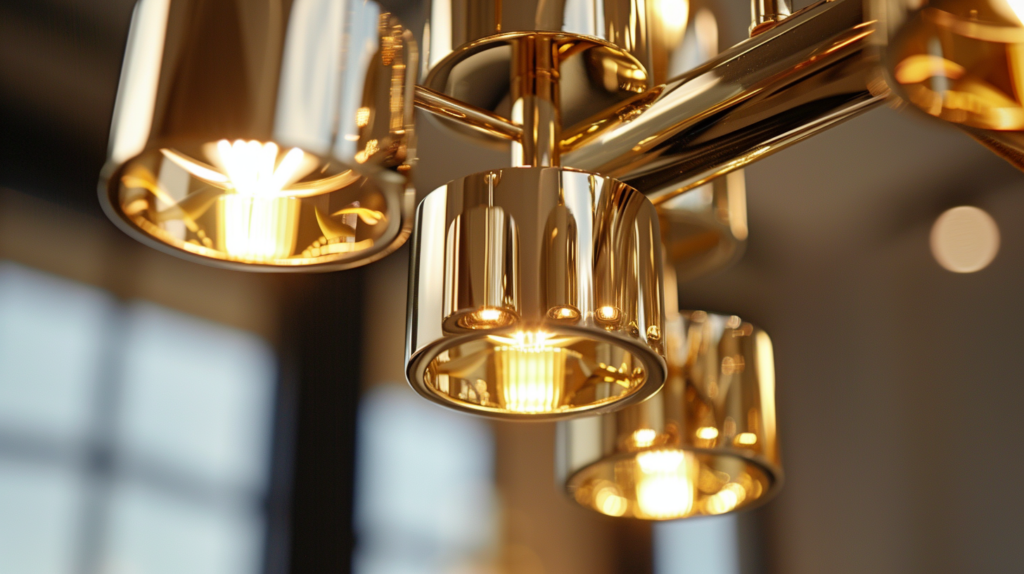
Types of coatings and their protective benefits
Choosing the right finish for your light fixtures can make a big difference. Coatings like epoxies, polyurethanes, and zinc-rich primers protect lights from rust and wear. For instance, we’ve seen how bronze outdoor lighting forms its own shield against corrosion by developing a unique greenish layer over time.
This isn’t just about looks; it’s about long-lasting protection.
We use these techniques on many of our products because they effectively guard against damage from weather and frequent handling.
An ounce of prevention is worth a pound of cure.
Metal processing methods like anodization, brushing, and polishing

Anodizing, brushing, and polishing are key steps in creating high-quality light fixtures. These methods make metals like aluminum strong and shiny. Anodizing uses electricity to coat the metal with a tough layer that resists rust.
It makes sure your lighting parts last longer and look better. We use this for many aluminum pieces in our lights.
Brushing gives metal a smooth, matte finish by getting rid of any marks or rough spots. Polishing then makes the surface shine brightly, catching your eye from across the room. Both steps ensure our lights not only work great but also add beauty to any space they light up.
Discussion on the importance of material thickness and its impact on durability
Choosing the right thickness for materials in light fixtures is key to their strength and lasting power. Thicker metals resist wear and damage much better, making them great choices for outdoor lights exposed to harsh weather.

Safety Certifications & Types Of Warranties
We always make sure our light bulbs and fixtures pass tough tests to get safety certifications. These stickers, like ETL or UL, mean our lights meet high standards. We also work with UL Solutions to check our lamps and signs are safe.
This gives you peace of mind knowing your lights are top-notch.
Plus, products should come with solid guarantees that cover you if something goes wrong. Look for warranties that cover corrosion and the failure of components.
Frequently Asked Questions
What makes a light fixture high quality?
Quality of components, materials, finishes, coatings, safety certifications, and warranty offered are the biggest determinants of quality for a light fixture.
How do I know if a light fixture is worth the price?
Check for features like long-lasting materials, warranties and long term energy savings for a basic cost analysis of a light fixture.
I have been the project manager for Modern.Place since early 2016, spending three of those years working overseas on the manufacturing & procurement side of the LED lighting industry. Constantly learning and passing on knowledge to others while excited for what the lighting industry will involve into next.

